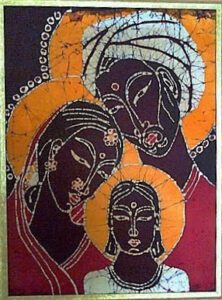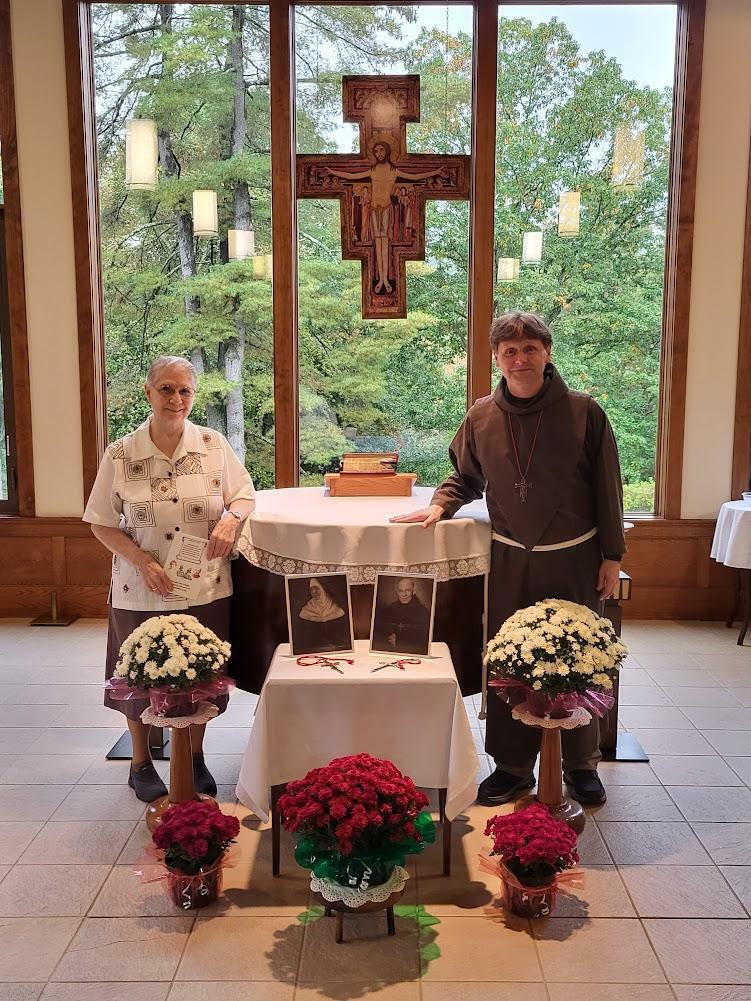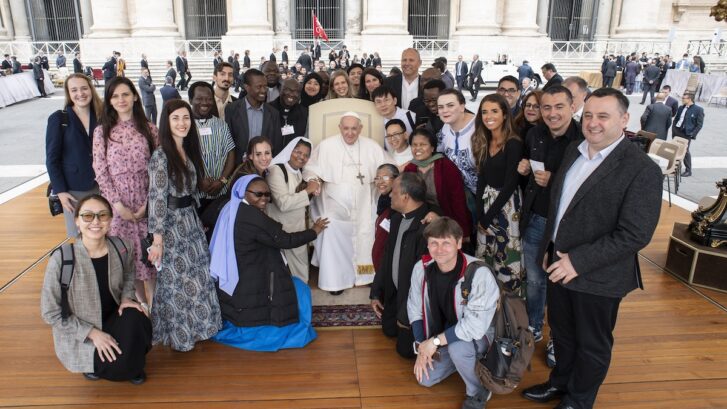Brother Jan Janoszka, SA, was ordained to the diaconate on Sunday, October 15, 2023 at Graymoor. Here, Brother Jan shares a personal reflection about his ordination and the journey in his religious life:
The De Nobili Centre in Southall, west London, UK, was known as an important hub for interreligious dialogue. Unfortunately, it does not exist anymore.
I had the privilege of collaborating with some members of the Jesuit community responsible for fostering interfaith relations within and beyond the boundaries of St. Anselm’s parish community. Although I did not learn Sanskrit and could not find enough time to study the Vedas, I was able to appreciate the ingenious beauty of communicating the Gospel in the context of cross-cultural pluralistic society.

One of the most intriguing ways to express it can be found in the world of artistic creativity. The representation of the Holy Family that welcomed the visitors to the De Nobili Centre in the past continues to work its magic in my imagination. It brings back a mosaic of fond memories and a vast array of social projects that fascinated me with their unpredictability, openness, and a clearly intuitive orientation towards the common good.
In a certain sense, different areas of social ministry and cooperation between various faith traditions and secular institutions (such as the plight of homelessness, immigration detention, the living wage campaign, racial and caste discrimination) resembled a variety of canvas used for creating a tapestry of spiritual embroidering that aimed at strengthening the role of civil society.
In my humble estimation, the Buddhist, Sikh, Muslim, and Christian communities rekindled within me another level of respectful awe and a renewed sense of wonder. In other words, I felt a profound realization that God was present and constantly active in persons, cultures, religions, and spiritual paths that c
ultivated a unifying power of self-emptying and engaging service. At the same time, in the blink of an eye, the parish community of St. Anselm’s helped me to rediscover the ecumenical significance of diakonia and a call to ministerial priesthood in the Catholic Church.
On one occasion, I was sent to Campion Hall, Oxford to participate in a four-day residential program entitled “Understanding Islam.” In my free time, I could reconnect with the places associated with John Henry Newman: St. Mary’s University Church and Littlemore, where he had led a semi-monastic lifestyle and was received to the Catholic Church.

Newman was ordained to the diaconate in the Church of England in 1824 and to the Anglican priesthood one year later. Having expressed a desire to go on a foreign mission and concern for the marginalized in England, he didn’t travel much. But his versatile contributions still permeate throughout the rich landscape of Christian traditions.
While visiting Littlemore, I learned that Newman used to call God “The Lover of Souls” and one of his quotations had a far-reaching ripple effect. It shed light on our ecumenical and interreligious relations in west London, and on the Divine art of diakonia:
“God has created me to do Him some definite service. He has committed some work to me which He has not committed to another. I have my mission. I may never know it in this life, but I shall be told it in the next. I am a link in a chain, a bond of connection between persons. He has not created me for naught. I shall do good; I shall do His work … He does nothing in vain. He knows what He is about…”
Somehow, for whatever reason, in my personal experience, these words not only stressed the fact that our Buddhist, Sikh, Muslim, or Christian neighbors had their own God-given mission and a calling to diakonia, but that we also were all interconnected. Additionally, strangely enough, I started appreciating more the link that a group of Anglican Franciscans had reminded me about. Namely, the importance of Newman’s spiritual journey for Servant of God Paul Wattson and Mother Lurana White.
From this moment forward, I decided to pay a greater attention to the Oxford Movement, the impact of Newman on two Episcopalians who responded to Christ’s invitation to establish a new religious community and were entrusted with the charism of At-one-ment.
Having recently received the sacramental gift of Holy Orders, the diaconate on October 15th, and being grateful for the opportunity of formation in Assisi, in Rome, in the John Paul II Center for Interreligious Dialogue (the Russell Berrie Foundation), I would like to conclude this reflection by asking for God’s guidance, grace, and a life-giving Presence. It may be fitting to use the lyrics composed by John Henry Newman and loved by our Founders:
“Lead, kindly light, amid the encircling gloom
Lead thou me on
The night is dark, and I am far from home
Lead thou me on
Keep thou my feet, I do not ask to see
The distant scene, one step enough for me.”


I enjoyed reading Br Jan’s reflection on his own journey toward and within the Society of the Atonement. He seems to have a thorough knowledge of the ideals of At One Ment as envisioned by Fr Paul and Mother Lurana. A wonderful Atonement vocation life is surely in store for him. God bless him on his future endeavors!